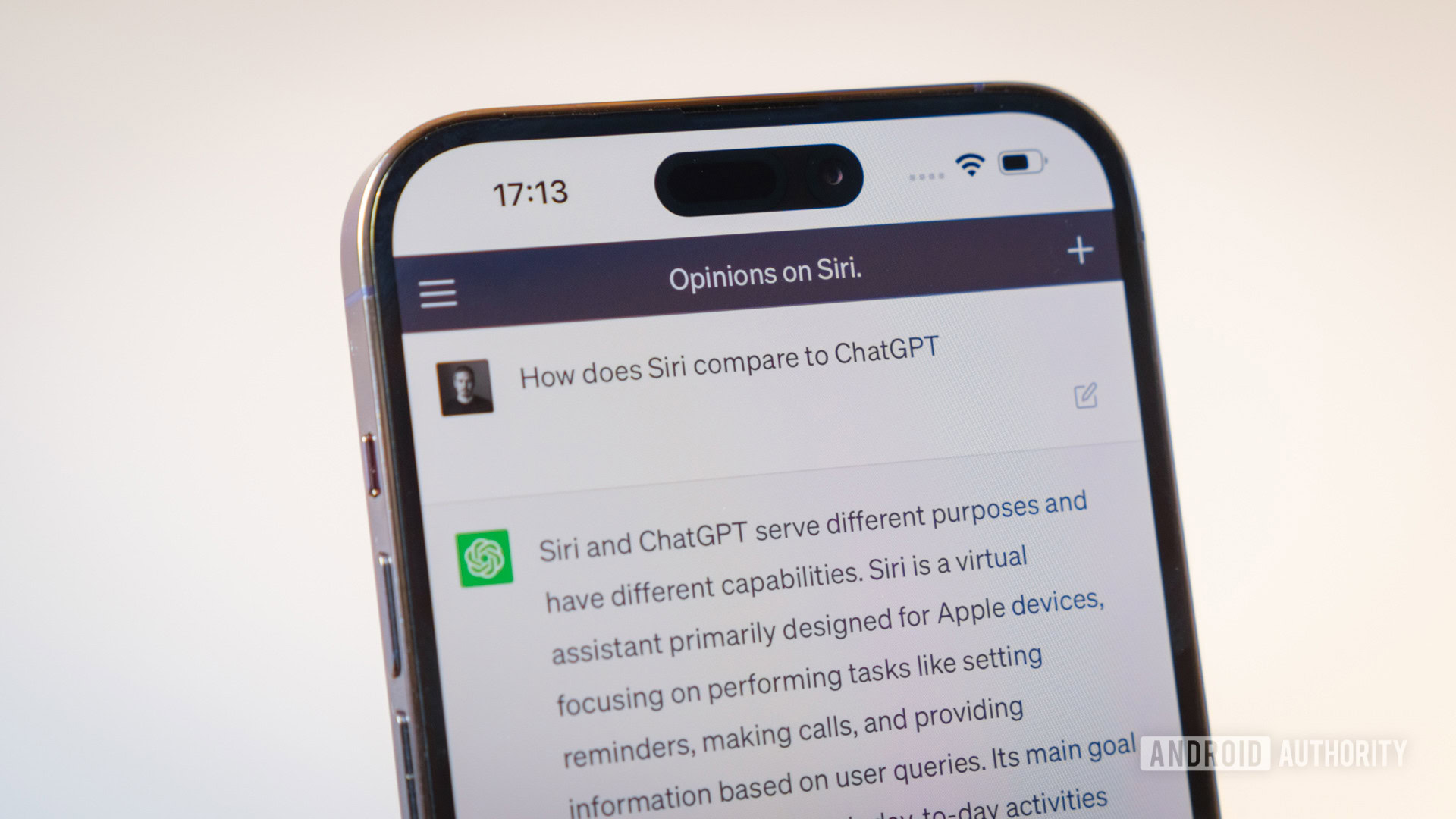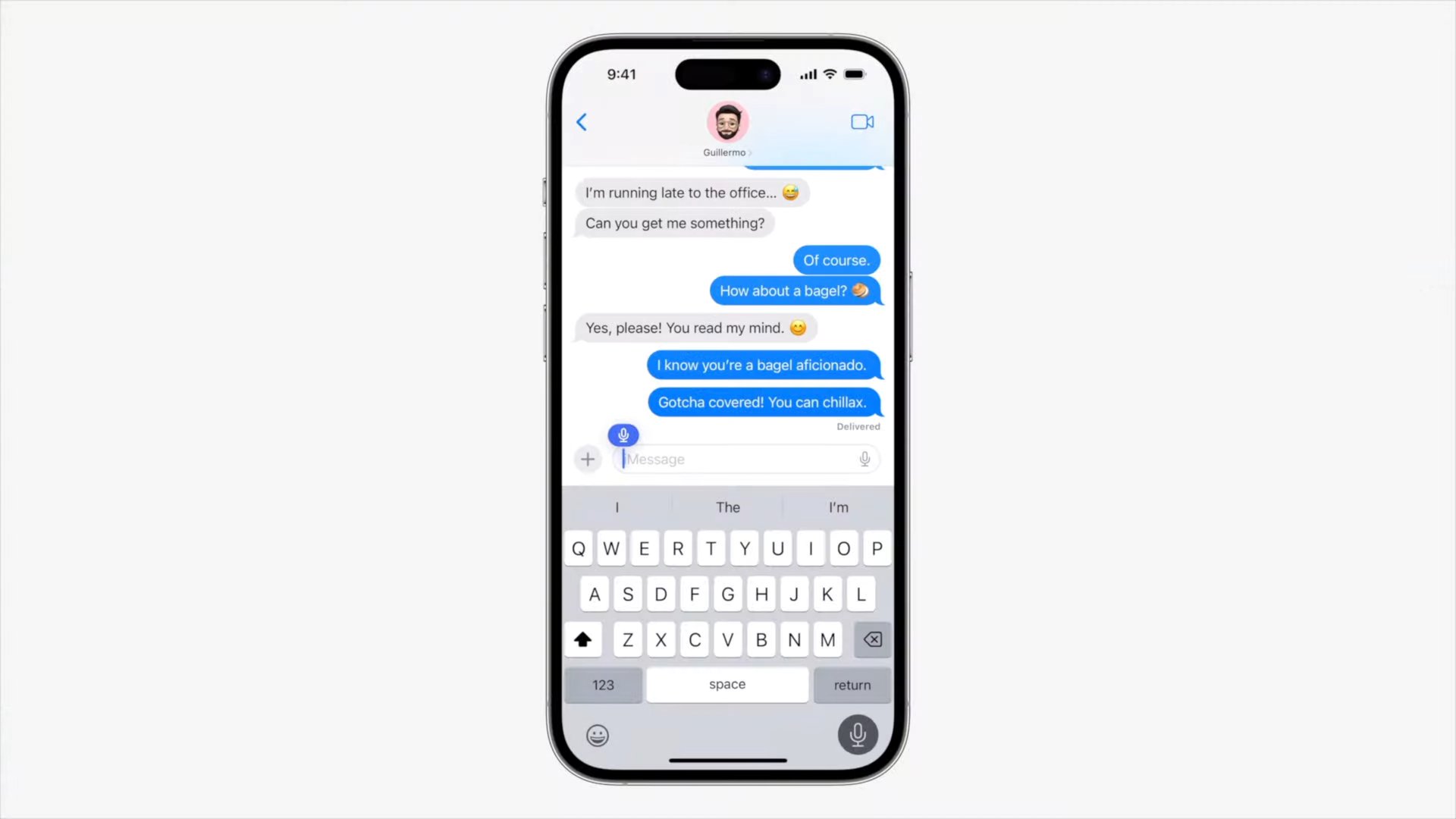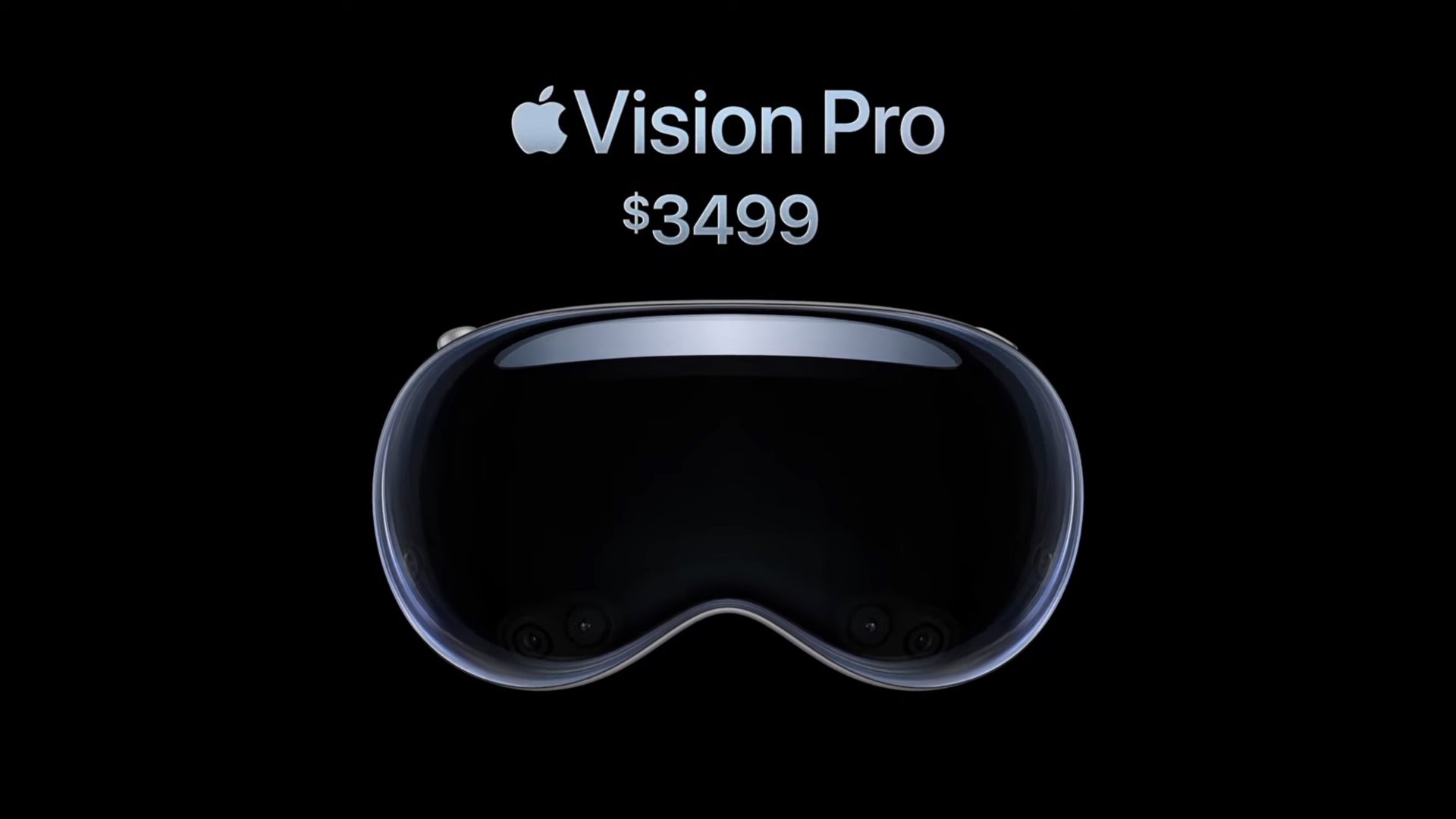Affiliate links on Android Authority may earn us a commission. Learn more.
In 2023, AI is everywhere. Unless you listen to Apple.

Apple announced plenty of shiny new toys at WWDC 2023; a new 15-inch MacBook Air, a powerhouse Apple M2 Ultra chipset, and even its long-rumored VR headset — the Apple Vision Pro. But a notable absentee from this year’s buzzword bingo was “generative AI.” Is Apple about to miss out on the next breakaway tech trend that Google and Microsoft have chased so hard? The company’s latest batch of announcements would certainly suggest so. At least in part.
Despite ducking the topic directly, Apple has a continued interest in AI use cases. “Machine learning” was mentioned a few times during Apple’s keynote. Call screening, voicemail transcription, and sentence-level autocorrection features leverage the company’s neural engine processor capabilities. At the same time, visionOS, for its new goggles, uses a neural network to scan and replicate your face for a digital avatar.
Apple's approach to AI is small-fry compared with those driving mass adoption.
In addition, Apple will undoubtedly passively benefit from the AI work of the broader ecosystem without having to wade through the murky waters of AI data collection and privacy concerns. You can leverage Microsoft’s Copilot in 365, Google’s Bard integration with Workspace, and Adobe’s Generative Fill in Photoshop from the comfort of your Mac Studio. But that leaves Apple’s already slim in-house software suit even further behind the competition.

No matter how you slice it, Apple’s approach to AI remains firmly on the use-case end of the spectrum. That feels comparatively small-fry in a world where its rivals are at the epicenter of driving mass-AI adoption.
Of course, Apple isn’t a data company in the way that Google and Microsoft are. It doesn’t have the same business- and search-based revenue streams, nor cheap access to the millions of training data points used to train Bard and ChatGPT. As its WWCD announcements made clear, Apple is still a product-first company, and it’s clear it’s far behind Microsoft, Google, and even others in this space. But even the world’s biggest consumer technology companies can’t afford to sleep on emerging trends, even if they’re slightly outside their wheelhouse.
While ChatGPT forges ahead, Siri has her fingers in her ears.
There’s a real risk that Apple ends up left behind, especially as its competitors are forging ahead with critical consumer applications. For instance, Microsoft is (finally) winding down Cortana in favor of focusing on the much more powerful GPT-4-powered Bing Search. Meanwhile, Siri, arguably the long-running weak link in the smart assistant ecosystem, plods along as if nothing has changed. Siri already barely passes for competent compared with Amazon’s and Google’s equivalents, and even their capabilities look dated compared to the flexibility of AI-powered models that are only in their infancy.
More worrisome, Apple is suspiciously silent on what, if any, work it’s undertaking with its partners in this space. While Google incorporated Adobe’s Firefly AI image generator into Bard at I/O 2023 (making up for its lack of generative imaging capabilities), Apple has nothing to say about how its ecosystem benefits content creators looking to leverage emerging AI use cases. Partners will come to the fold, but Apple is slow to showcase that its ecosystem is not just AI-ready but where development is actively taking place.
Apple is dabbling in AI features, but there's no mention of how its ecosystem benefits those working on the cutting edge.
For instance, its behemoth M2 Ultra chipset, which has a beefier 32-core neural engine and vast amounts of unified memory, is ripe to power secure, privacy-focused, on-device AI. The company noted that all this power might be suitable for training large transformer models, but only time will tell if Apple can compete with power-house servers when working with low-level training data sets. Either way, it’s an expensive barrier to entry, and Apple’s Core ML SDK doesn’t offer the simple accessibility of OpenAI’s APIs and plugins that are opening up AI to relatively novice coders.

Instead of acknowledging AI as the quickly growing field it is, Apple went to pains to inform its audience that it had been focusing on its Vision Pro XR headset for years. In typical Apple fashion, it’s spent years curating a higher-end user experience rather than rushing to be first. This is a serious computer strapped to your eyeballs, not just a screen relaying information from elsewhere. Still, it’s hard not to feel that the AR/VR/XR fad has already come and gone.
Google and Microsoft have both dabbled in the market without commercial success. HoloLens is firmly focused on enterprise and industrial rather than consumer applications. Google hasn’t had a meaningful announcement in years, despite bringing mobile VR/AR to everyone with ideas like Cardboard and the ill-fated Google Glass all the way back in 2012.
Even the heavily invested Meta (remember Facebook spent $2 billion to acquire Oculus and even changed its name, such it its faith in the metaverse) has struggled to convert a reasonably large user base into a successful business model that reaches beyond the niche market of VR gaming (also occupied by Sony, HTC, and Valve). And that’s with a much more affordable entry price than Apple’s $3,500 goggles.
AI versus AR/VR, which one is the bigger deal?
The simple fact is that, unlike generative AI, there’s still no obvious and compelling mass-use case for augmented reality. At $3,500 a pop, Apple’s Vision Pro appears destined to be a niche within a niche. Meanwhile, generative AI is already shaking up industries. Conversely, the Apple Vision Pro is at least a real product. We’re still waiting to see if many early AI ventures turn out to be profitable, sustainable business models.